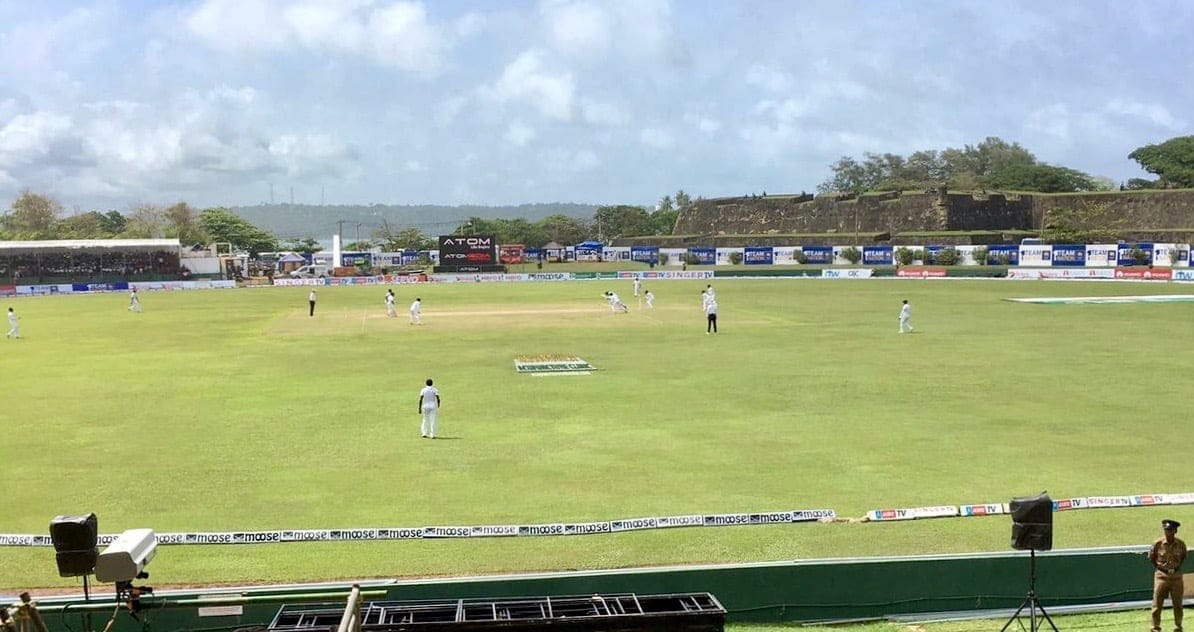The first Test between Sri Lanka and South Africa at the Galle International Stadium was an interesting but ultimately disappointing affair. All over by tea on the third day – Saturday, when the crowd was at least a bit bigger than before – it highlighted the increasing difficulty that visiting teams encounter in Test cricket. It is, after all not so long ago that Sri Lanka toured South Africa and lost the Test series three-nil. South Africa had a nightmare tour of India a couple of years ago but beat the Indians two-one in early 2018. It was not difficult to feel some sympathy for the visiting captain Faf du Plessis as he called for the toss to be dispensed with in Test cricket.
That said, it was a little more difficult to feel sympathy for his batsmen. The conditions were clearly helpful to Sri Lanka’s spinners but that could hardly have come as a surprise. The last time South Africa were at Galle, in 2014, they won, admittedly after winning the toss and batting first; South Africa made 455 for nine in that first innings and took the game away from Sri Lanka. Interestingly Dilruwan Perera and Rangana Herath shared 11 wickets in that match (eight of them to Perera) but they were expensive.
This time it was very different. There was considerable turn even on the first day when South Africa’s inexperienced slow left arm wrist spinner, Tabraiz Shamsi, caused a few difficulties. By mid-afternoon with Sri Lanka 150-for-five the game seemed evenly poised. There was then a dramatic storm which halted play for a while. A couple of wickets fell quickly when play resumed but somehow, whether it was a wet ball or for whatever reason, South Africa’s attack seemed to have lost its teeth. The last two wickets added over a hundred and Sri Lanka finished on 287.
Opener Dimuth Karunaratne carried his bat for a magnificent 158. He is the fourth Sri Lankan to have achieved this considerable feat (his opposite number, Elgar, is the only batsman to have done it three times). He is, however, the first Sri Lankan to have done it in Sri Lanka. He is in fact only the second batsman to have carried his bat in Sri Lanka and both occurred in Galle. The first was Virender Sehwag (201* out of 329 in 2008). Karunaratne faced just 222 balls and never seemed in any difficulty at all. Nobody else got 30.
By the close South Africa had already lost Aiden Markram to Herath, who opened the bowling with Perera.
Things did not improve. By the afternoon of the second day they were all out for 126, (then) their lowest score against Sri Lanka. Du Plessis managed 49 and Vernon Philander hung around for a while; the rest had no clue against Perera and Herath. Suranga Lakmal brought himself on to polish off the tail.
Sri Lanka now had to build on that substantial lead. Karunaratne just carried on where he had left off, making 60 off 80 balls. They closed day two on 111 for four.
Despite an accomplished and unusually restrained 36 from Angelo Mathews, Sri Lanka were all out before lunch for 190, leaving South Africa a hypothetical target of 352 to win.
It was obvious that South Africa were not going to win. With more than two and a half days left in the match it was predictable that they would lose. What nobody could have foreseen was the abject manner of their surrender, all out for 73 – their lowest score since readmission in 1991 – in only 28.5 overs. The top five were all out by the middle of the 15th over, with 32 runs on the board. Elgar, Markram, Hashim Amla and Temba Bavuma made 65 between them in the match.
It seemed obvious that if South Africa were going to make a decent fist of it, Elgar in particular was going to have to play one of those long, gritty innings he seems to relish. But with his score on four he charged down the wicket to Perera, missed the ball and was stumped. That seemed to exemplify the approach. Conditions were inhospitable but not dangerous or impossible. But South Africa seemed to accept their demise as pre-ordained and not worth questioning. Perera took six for 32, and 10 in the match. He now has 119 wickets in only 30 Tests.
He and the 40-year old Herath opened in the second innings too. In fact, for a while it looked as though we might see one of those very rare instances where a pair of bowlers bowl-unchanged through a Test innings. This has happened 27 times in all, but only six-times since World War Two and only twice in the 21st century. Oddly enough, the last occasion was very recent, in March 2018, when Trent Boult and Tim Southee routed England for 58 in Auckland. It has happened once in Sri Lanka, in Kandy in 1994 (Waqar Younis and Wasim Akram). But, not surprisingly, no pair of spinners has done it.
But after 28 overs and with the score on 72 for 9, Lakmal finally rested Herath and brought on Lakshman Sandakan, who had been ostentatiously loosening up from virtually the start of the innings. The change was justified in that he took the last wicket with his fifth ball.
It was a massive and satisfying win for Sri Lanka. But few observers, certainly no neutral ones, would regard it as a triumph for Test cricket.
Bill Ricquier




